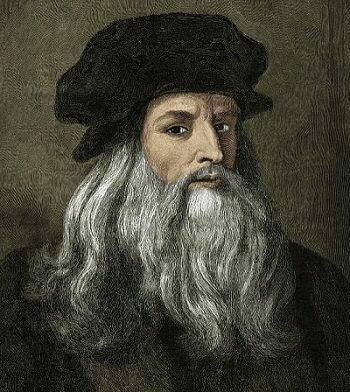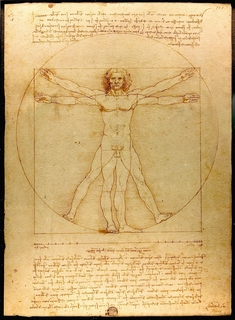Revealing the Genius: Leonardo da Vinci's 'Vitruvian Man
Leonardo da Vinci, the renowned painter, sculptor, and inventor, was celebrated for his artistic talents and his significant contributions to the study of anatomy and the human body.
One of his most recognisable and enduring works is the iconic 'Vitruvian Man,' which continues to captivate audiences more than five centuries after its creation.
The 'Vitruvian Man' is a drawing of a male figure positioned within a circle, seemingly possessing four arms and four legs. During my high school years, I remember being fascinated by this image when it adorned the cover of a school textbook.However, I still needed to comprehend its meaning and significance at that time fully.
The drawing represents the same man superimposed in two different positions, contrary to the initial impression of an octopus-like creature. Yet, I had to grasp the deeper implications and profound meaning behind this work. Like everything associated with Leonardo da Vinci, this drawing has a foundation in mathematics. With it, Da Vinci sought to apply scientific methodology and mathematical principles to studying human anatomy.

Leonardo Da Vinci Portrait
Da Vinci's interest in anatomical accuracy extended beyond the 'Vitruvian Man.' He maintained meticulous notebooks containing precise measurements of various body proportions, endeavouring to uncover a universal perfection of human anatomy.
His exploration of anatomy originated during his apprenticeship with Andrea del Verrocchio, as his teacher emphasised the importance of a comprehensive understanding of the human body for aspiring artists. However, it was as a successful artist in his own right that Leonardo pursued his passion further.
A not so well-known fact was that in Florence, Italy, he began dissecting corpses at a local hospital, delving deeper into studying the human body. Some find this gross but it's how things were discovered back then, and still are today, about human anatonomy and how our bodies function.
Leonardo da Vinci was an artistic genius and a scientific prodigy. His meticulous exploration of anatomical proportions influenced his perspective in painting and sculpture and drove him to compile a book of his drawings and observations, intending for it to be utilised in medicine.
During that time, medicine was plagued by ignorance and backward practices. Leonardo harboured hopes that Renaissance discoveries would transcend the realm of art and find application in medicine.
Da Vinci's groundbreaking work in studying human proportions was far ahead of its time and laid the foundation for all future anatomical studies. In an era before X-rays, there was no viable means to explore the body's interior without the dissection of cadavers.Despite the potentially repulsive nature of such practices, Leonardo's endeavours remain among his most outstanding achievements.

A Da Vinci anatomical drawing
It stands as a testament to the significance of Leonardo da Vinci's work that his iconic drawing, the 'Vitruvian Man,' (main blog image) is instantly recognisable worldwide, even if many individuals may need to be made aware of its origin or meaning.
Leonardo da Vinci's contributions to understanding human anatomy transcend the boundaries of art, leaving an indelible mark on the world of science and medicine. His relentless pursuit of anatomical accuracy and his desire to merge art and science continue to inspire generations of scholars, artists, and medical professionals.
The 'Vitruvian Man' stands as a testament to the brilliance of Leonardo da Vinci, forever immortalising his insatiable curiosity, pioneering spirit, and profound understanding of the human form.
Interested in other artists/ Maybe take a look at this article on Who is Pablo Picasso
